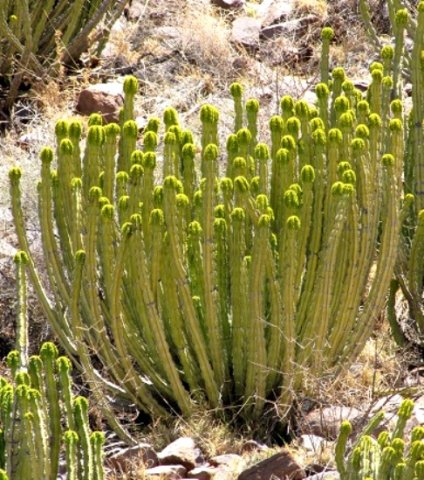Euphorbia avasmontana var. avasmontana

Euphorbia avasmontana var. avasmontana is a robust succulent that grows a multitude of erect stems, branching at the base. The plant is very spiny, not easy to handle. The toxic white latex should not be ingested or come into contact with the eyes.
The columnar stems grow bunched closely together, reaching heights of a little over 2 m. Suckering is common and the branched plant may exceed 2 m in width. The stems are about 7 cm in diameter, rarely rebranching higher up. The yellow-green stems show slight constrictions at irregular intervals. Stems typically have five to seven of the protruding vertical ridges common to many Euphorbia species.
Leaves are small and ephemeral, dropping off very soon. Photosynthesis is mainly a function of the stems. The rigid, straight stipular spines grow in angled pairs on the hard, dark red stem ridges that age to pale grey. Identification of the species is made simpler by the three horizontally positioned cyathia scars, appearing regularly on the ridge between the spine pairs near stem tops.
Flowering appears in short cymes of the yellow cyathia or false flowers. They can here be seen neatly restricted to similar sized sections of the stem tips. The plant flowers in spring to autumn, although some flowering may be seen during the winter months as well.
The fruits are three-angled capsules, 6 mm in diameter. The seeds are smooth and globose, less than 2 mm in diameter (Van Jaarsveld, et al, 2006; www.cactus-art.biz).

